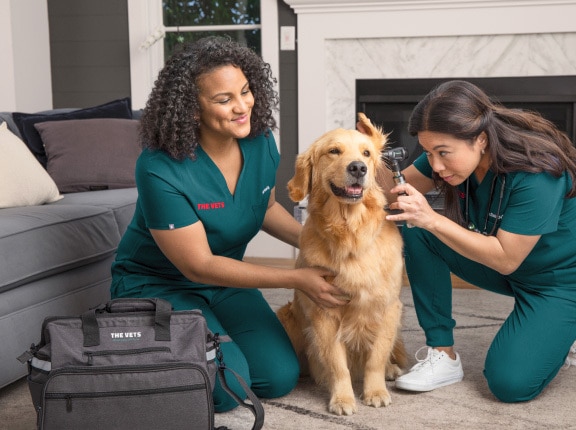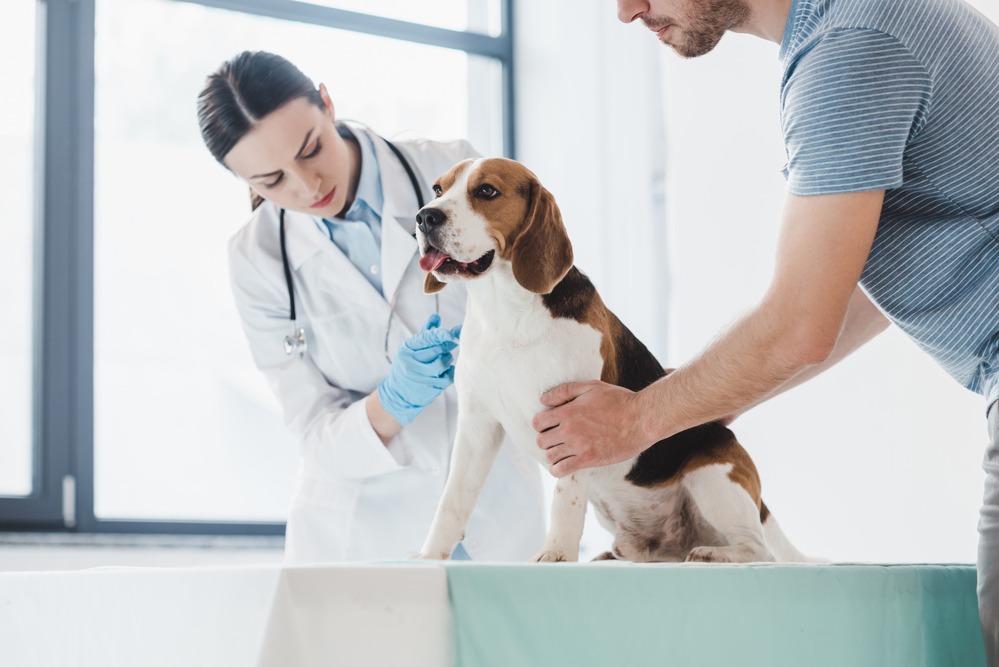Inside Look at How a 24 hour vet bellingham Handles Emergencies with Care
Inside Look at How a 24 hour vet bellingham Handles Emergencies with Care
Blog Article
Everything About Veterinarian Surgical Procedure: Recognizing the Value of Professional Treatment for Your Family pets
Vet surgical procedure is a crucial component of pet dog medical care. It encompasses numerous procedures, from routine elective surgeries to immediate treatments. Recognizing the intricacies of these surgical procedures can help pet proprietors make notified decisions. The prep work, execution, and recuperation phases are crucial for making sure the wellness of pets. With proper understanding, owners can navigate the complexities of vet care. What variables should be taken into consideration prior to an animal undertakes surgical treatment?
Kinds of Veterinarian Surgeries
When a pet dog requires surgical treatment, understanding the numerous kinds of vet surgeries can help animal owners make educated decisions. Veterinary surgical treatments can be generally categorized right into three primary kinds: elective, immediate, and emergency situation surgical treatments. Elective surgical procedures, such as spaying or neutering, are prepared procedures that are not immediately life-threatening. Urgent surgical treatments, like those for international body elimination, need to be executed quickly but are not lethal in the moment. Emergency situation surgical treatments, such as those dealing with extreme injury or inner blood loss, are vital and require prompt attention.Additionally, surgical treatments can differ in intricacy, varying from minimally invasive laparoscopic treatments to a lot more comprehensive open surgical treatments. Each kind of surgery lugs its own dangers and healing processes. Understanding these categories permits animal owners to involve in significant conversations with vets, leading to far better results for their precious pets.
Getting ready for Your Pet dog's Surgery
Planning for a pet's surgery entails an extensive list to guarantee all basics are covered. Efficient communication with the veterinarian is crucial for comprehending the procedure and any kind of necessary pre-operative actions - canine tplo surgery. In addition, having clear post-operative treatment guidelines will assist proprietors offer the very best assistance for their recovering pets
Pre-Surgery Checklist Essentials
Ensuring a smooth surgical experience for a pet dog requires careful preparation and attention to detail. A pre-surgery checklist is vital for pet owners to adhere to. Verifying the set up surgical procedure day and time is vital. Owners need to likewise confirm that their family pet has fasted according to the veterinarian's guidelines, normally for 8-12 hours prior to surgical treatment. Collecting needed medical records, including inoculation background, is essential for the veterinarian's evaluation. It is also advisable to prepare a comfy room at home for the pet dog's healing after surgical treatment. Lastly, proprietors should have a strategy for transportation to and from the veterinary center, making certain that the family pet is protected and comfy throughout the trip. Adhering to these steps can substantially boost the surgical experience.
Connecting With Your Veterinarian

Effective communication with the veterinarian is necessary for a successful medical experience for family pets. Owners need to be prepared to discuss their animal's case history, including any type of pre-existing problems, drugs, and allergic reactions. This information assists the vet evaluate threats and tailor the medical plan appropriately. Additionally, pet dog owners need to ask concerns pertaining to the procedure, anesthetic, and expected outcomes to ensure they fully recognize the procedure. Making clear any type of questions can relieve anxiety for both the pet and the proprietor. It is also vital to communicate any type of behavioral changes or concerns observed in the family pet leading up to the surgical procedure. Ultimately, clear dialogue fosters count on and partnership, making certain that family pets receive the best possible care throughout their surgical trip.
Post-Operative Care Recommendations
After reviewing the operation with the vet, pet dog owners should concentrate on post-operative care instructions to facilitate a smooth recovery for their pet dogs. These directions normally include keeping track of the medical website for indications of infection, such as redness or discharge. Animals might need to be kept one's cool and constrained to avoid extreme activity that can interrupt healing. Pain monitoring is essential, so proprietors ought to comply with the vet's support on providing medications. Furthermore, nutritional restrictions may be advised to stay clear of gastrointestinal trouble. Routine follow-up consultations are very important to guarantee correct healing and address any type of worries. By sticking to these post-operative care instructions, pet dog owners can greatly add to their animal's healing and total well-being.
The Surgery Explained
The surgery for family pets encompasses critical steps that guarantee their security and healing. Pre-surgery preparations are essential for decreasing threats, while post-operative treatment standards play an essential duty in advertising recovery. Comprehending these components assists family pet proprietors browse the medical experience a lot more efficiently.
Pre-Surgery Preparations
Before a pet dog undertakes surgical procedure, numerous crucial prep work have to take location to guarantee a secure and successful procedure. First, an extensive vet evaluation is vital to assess the pet's total wellness and determine any potential risks. This might include blood tests, imaging, or various other diagnostics. The vet will certainly additionally review anesthetic choices customized to the pet's particular needs. Furthermore, animal owners are generally instructed to withhold food and water for a defined time before surgery to minimize the risk of difficulties during anesthesia. It is essential for proprietors to supply a full case history, consisting of any medicines or allergies, guaranteeing the surgical team has all required details. Proper communication and adherence to pre-surgery guidelines can considerably boost the result of the procedure.
Post-Operative Treatment Guidelines
Proper post-operative care is essential for making sure a pet dog's healing following surgical procedure. After the procedure, family pets ought to be monitored carefully for any type of signs of issues, such as excessive bleeding, swelling, or unusual behavior. It is very important to adhere to the vet's guidelines relating to medicines, including pain relievers and antibiotics. Animals ought to be maintained in a quiet, comfy setting to reduce stress and anxiety and promote recovery. Restricting activity is crucial; short, leashed walks may be necessary, however jumping or running need to be stayed clear of. Regular follow-up appointments click over here now ought to be scheduled to analyze the healing process. In addition, the surgical site should be maintained clean and dry, with any kind of signs of infection reported to a veterinarian without delay. Complying with these standards improves recuperation outcomes.
Anesthesia and Discomfort Monitoring
Effective anesthetic and discomfort management are crucial elements of vet surgery, ensuring that family pets stay comfy and safe throughout the treatment. Vets assess each animal's specific demands, considering variables such as age, weight, wellness status, and the kind of surgical procedure being performed.Anesthesia protocols normally include a combination of pre-anesthetic medicines, induction representatives, and inhalant anesthetics, enabling specific control over the animal's level of consciousness. Monitoring throughout surgical treatment is essential; vets continually observe essential indicators to resolve any kind of prospective difficulties promptly.Pain management methods might involve opioids, non-steroidal anti-inflammatory medicines (NSAIDs), and regional anesthetics, tailored to the pet dog's certain situation. This complex technique helps decrease discomfort and promotes a smoother medical experience. By prioritizing vet veterinarian reliable anesthetic and discomfort administration, vet specialists improve the total well-being of family pets undertaking procedures, ensuring they obtain the highest requirement of care.
Post-Operative Care and Healing
Adhering to surgery, the emphasis changes to post-operative treatment and healing, which is important for making certain a family pet's risk-free go back to regular activities. Throughout this duration, pets call for a silent, comfortable setting to aid recovery. Owners must carefully monitor their animals for any indications of pain or uncommon behavior.Veterinary standards frequently consist of details guidelines connected to drug management, wound care, and dietary modifications. It is crucial to abide by these suggestions to minimize complications and advertise recovery. Pets might need to be limited from strenuous activities, such as running or leaping, throughout their recovery period (canine tplo surgery).Regular follow-up visits with the veterinarian enable surveillance of the family pet's development and prompt changes to the care strategy. Providing emotional assistance and companionship can additionally enhance a pet's recuperation experience, assisting to minimize stress and anxiousness. Overall, diligent post-operative treatment plays a considerable function in accomplishing a successful healing
Acknowledging Issues After Surgery
How can animal proprietors recognize difficulties after surgical treatment? Awareness of details indicators is essential for making certain the health of family pets during healing. Common indications consist of excessive swelling, redness, or discharge at the medical site, which might indicate infection. Additionally, persistent pain, shown by whimpering or reluctance to move, need to prompt instant focus. Adjustments in hunger or water intake can also suggest issues; a reduction in these behaviors may signify pain or distress.Moreover, family pet proprietors need to check their animals for any kind of uncommon behavior, such as lethargy or difficulty breathing, as these can be indicators of significant concerns. Throwing up or looseness of the bowels complying with surgical procedure may need immediate vet evaluation. Acknowledging these issues early can considerably impact a family pet's healing procedure, emphasizing the value of vigilance and timely communication with a veterinarian for any worrying signs and symptoms.
The Function of Veterinary Professionals in Surgical Care
Vet specialists play a vital duty in making certain the safety and success of surgeries for animals, specifically complying with surgery when keeping an eye on and treatment are vital. These professionals consist of vets, vet technicians, and assistance team, all of whom contribute specialized abilities to the surgical process.Before surgical treatment, vets conduct comprehensive assessments to analyze the animal's health, making certain that any kind of hidden problems are handled. During the treatment, the medical team provides anesthetic, maintains sterile environments, and keeps an eye on vital indicators, very important for minimizing risks.Post-operative treatment is similarly substantial; veterinary experts observe for difficulties, handle pain, and overview proprietors on recuperation methods. Their dog hospital proficiency enables them to acknowledge very early indications of distress or infection, guaranteeing timely treatment. Eventually, the collective initiatives of veterinary specialists in medical treatment foster a secure atmosphere, promoting the health of family pets throughout the medical trip.

Frequently Asked Questions
Just how Do I Select the Right Veterinary Specialist for My Pet?
Picking the appropriate veterinary doctor involves investigating qualifications, reviewing evaluations, and examining the center's environment. It is important to review the doctor's experience with specific treatments and their communication design when choosing.
What Prevail Misconceptions About Veterinarian Surgeries?
Common mistaken beliefs concerning veterinarian surgeries consist of beliefs that they are always high-risk, unnecessary, or for emergency situations. Many pet proprietors underestimate the benefits of preventive treatments and the ability associated with vet medical care.
How Much Will My Pet dog's Surgery Expense?
The cost of an animal's surgical procedure can differ significantly based upon elements such as the sort of treatment, the veterinarian's experience, and geographic location (animal emergency care bellingham). Usually, expenditures vary from a couple of hundred to a number of thousand bucks

Can My Family Pet Eat Before Surgery?
Before surgery, it is normally recommended that family pets avoid eating for a particular period. This fasting helps in reducing the danger of issues during anesthetic. Proprietors ought to consult their vet for accurate guidelines tailored to their pet's requirements.
What if My Pet Has Pre-Existing Health And Wellness Conditions?
When an animal has pre-existing health and wellness problems, it's crucial for the veterinarian to evaluate these factors prior to surgery. This examination warranties ideal precautions are taken, reducing threats and maximizing the family pet's total safety and security throughout the procedure.
Report this page